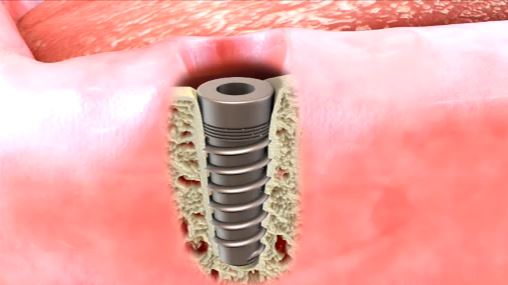
Exploring Osseointegration's Role in Dental Implants
When it comes to missing teeth, dental implants are the only tooth replacement choice designed to look and sound like your normal tooth and are permanently implanted in your mouth. Dental implants can replace a single tooth or full mouth. Furthermore, with careful treatment, dental implants will last a patient a lifetime. Dental implants have also been shown to assist in bone development in addition to replacing missing teeth. With tooth loss, there is bone loss in that area. Dental implants strengthen bones by stimulating bone development via the osseointegration mechanism.
What is osseointegration of dental implants?
Osseointegration is a concept used when describing dental implant therapy, but it is new to most patients. Osseointegration is the clinical word for the fusing process between the implant and the patient’s jaw bone cells during the recovery period.
In the dental implant dentistry, it essentially becomes a component of the gum tissue and jawbone. The tissues of the jaw grow around the implant, adding strength and durability. Osseointegration is a procedure that is required for dental implant care to be effective. Dental implants would never be safe enough to hold prosthetics without osseointegration.
How to know when a dental implant has osseointegrated?
Osseointegration usually begins a few weeks after implant insertion and may be assessed at patient check-ups. This ensures that the implant is stable sufficiently for the placement of the final restoration.
There are many techniques for determining the stability of primary implants. RFA (Resonance Frequency Analysis), tactile sensation, torque evaluation, and percussion test are the most widely utilized. However, RFA is the only objective, non-invasive, and repeatable method for measuring the degree of osseointegration before final restoration, enabling the dentist to assess the optimum loading period and hopefully shortening treatment periods and preventing premature loading.
How long does osseointegration of dental implants take?
Osseointegration is time-dependent, usually taking three to six months. If the implant has is securely attached to bone tissue, the dentist has to bond the abutment and dental crown.
Why is titanium implant used for osseointegration implants?
The architecture of dental implants contributes significantly to their durability. Titanium has been identified as the chosen metal of choice for dental implants due to its chemical composition. Titanium, in particular, does not have any animal tissue or particles, which significantly reduces the chance of the body rejecting the dental implant. Furthermore, titanium implant is the most biocompatible material for a metal implant and has better osseointegration ability. Moreover, titanium’s biocompatibility, lightweight construction, and toughness make it easy for the user to achieve a natural tooth appearance and feel.
What are the tips for the successful osseointegration of dental implants?
As long as the patient has healthy oral hygiene, good oral health, osseointegration is a standard mechanism that can proceed independently. However, some symptoms and practices can impede the osseointegration procedure, so it is essential to obey all post-surgical treatment directions. The following pointers will assist patients in ensuring that osseointegration occurs and that dental implant is eventually successful:
- Select an accomplished and competent dental implant specialist, such as Dr. Adatrow, to prevent problems of implant installation.
- Use all prescription antibiotics precisely as instructed. Consider using an antibacterial mouthwash to help reduce bacteria in the mouth.
- Avoid drinking and smoking for at least two weeks before dental implant surgery and for the remainder of the healing period.
- Brush and floss daily to prevent decay and bacterial infection (avoid brushing directly on implant site for the first few days after surgery)
- Maintain a biannual dental exam and cleaning routine.
- Maintain all planned follow-up visits in the weeks and months after the insertion of dental implants.
- You should report any complications to Dr. Adatrow as soon as possible.
Looking for best Osseointegration of Dental Implants?
Dr. Adatrow can help!
you want to know more about Osseointegration of Dental Implants, you can schedule a consultation with Dr. Adatrow. Dr. Adatrow has dental implants and TMJ expertise of nearly two decades and can provide you with the best dental treatment. Please contact our office to schedule your consultation.
About Advanced Dental Implant and TMJ Center
Advanced Dental Implant and TMJ Center provides personalized and specialized dental treatment for patients in Desoto County, MS and Memphis, TN areas. Dr. Pradeep Adatrow is Specialist in Dental Implants and Gum Diseases and provides patients with customized treatment plans to meet the oral health needs of his patients. Dr. Adatrow is the only practicing board-certified Periodontist and Prosthodontist in the South East United States. He earned his Doctor of Dental Surgery and Post Graduate Prosthodontic Training from the University of Tennessee College of Dentistry and his Post Graduate Training in Periodontics from Indiana University. Dr. Adatrow is board certified by the American Board of Periodontology and is a Fellow of the prestigious International College of Dentistry. Along with a devoted team of dental hygienists, assistants, and administrative staff, we strive for excellence in customer satisfaction. Please visit our website at www.advanceddentaltmj.com or call us at (662) 655-4868 to schedule a consultation.


